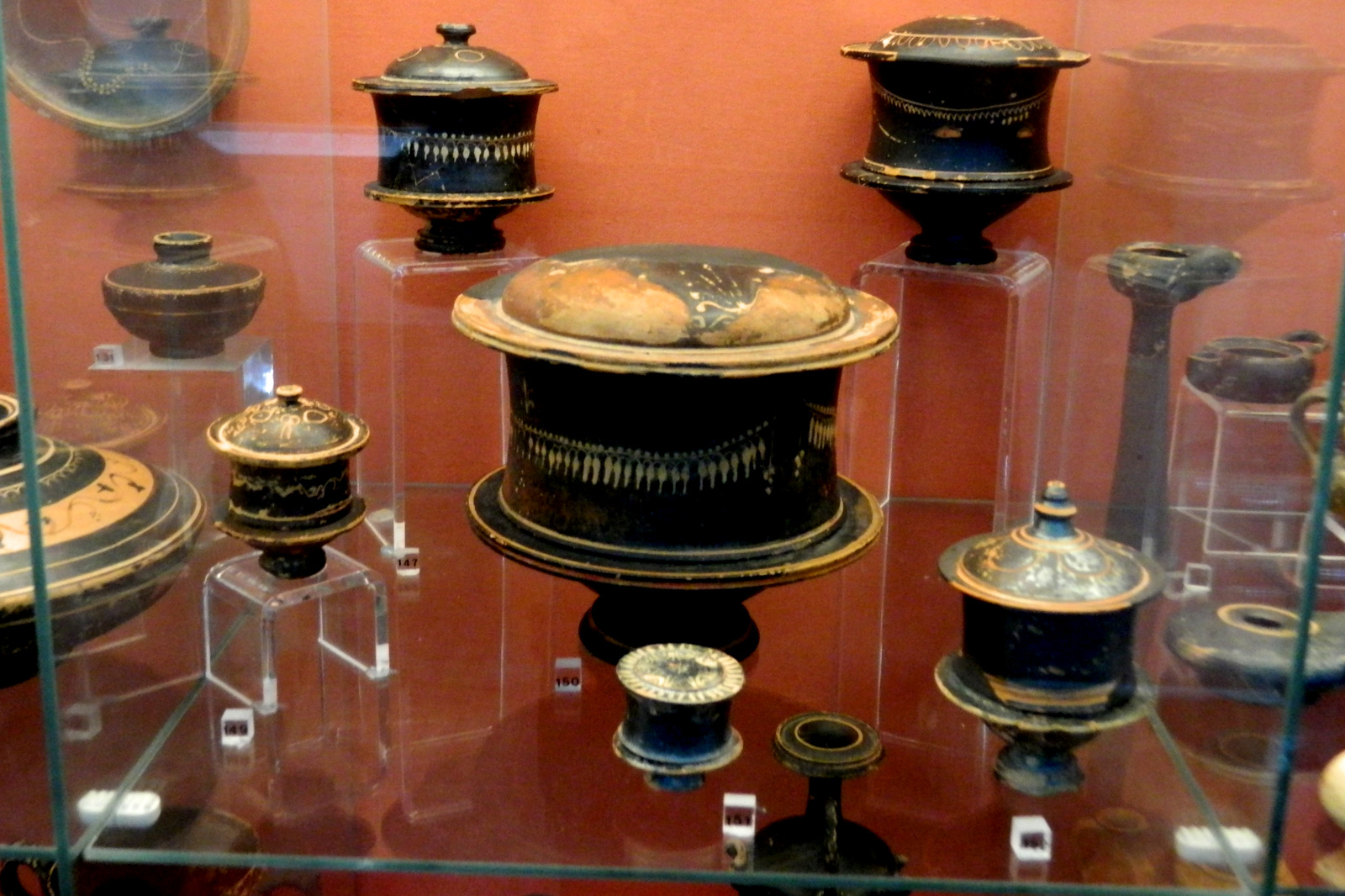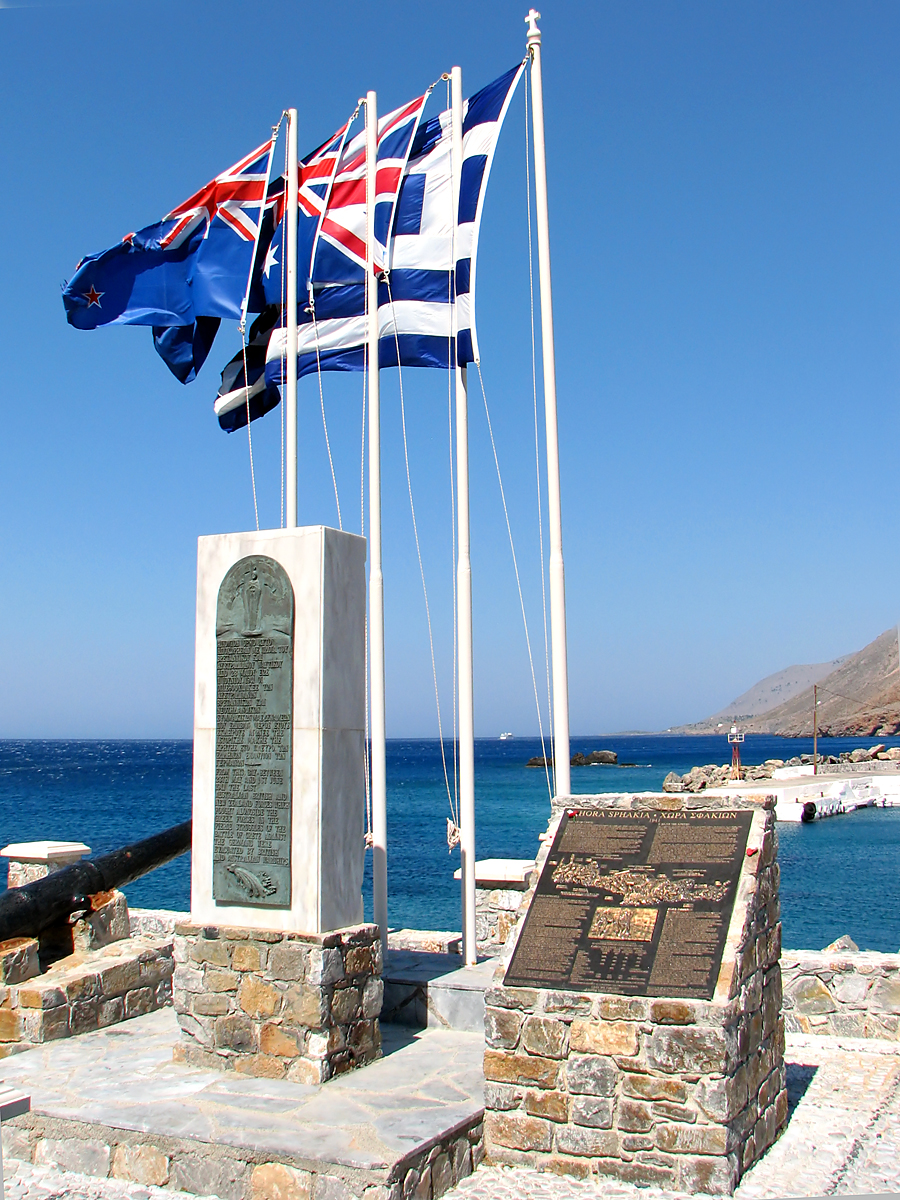|
Voula Papaioannou
Voula Papaïoannou (1898–1990) was a Greek photographer, known for her photography of Greece, its people and its landscape. Biography Papaïoannou was born in Lamia, Greece, but grew up in Athens. She studied at the Polytechnic University of Athens and developed an interest in photography. With the outbreak of World War II, she took up documentary photography and began to photograph and document social subjects during the duration of the German and Italian occupation of Greece. She turned her camera to troops departing for the front line, and to the casualties of war, raising awareness of the various humanitarian issues such as the Great Famine which arose out of the occupation. As Athens suffered a starvation crisis, Papaïoannou photographed emaciated children, providing an account of the horrors of war on the civilian population. After the liberation, Papaïoannou became a member of the photographic unit of the UNRRA (United Nations Relief and Rehabilitation Administrati ... [...More Info...] [...Related Items...] OR: [Wikipedia] [Google] [Baidu] |
Greeks
The Greeks or Hellenes (; el, Έλληνες, ''Éllines'' ) are an ethnic group and nation indigenous to the Eastern Mediterranean and the Black Sea regions, namely Greece, Cyprus, Albania, Italy, Turkey, Egypt, and, to a lesser extent, other countries surrounding the Mediterranean Sea. They also form a significant diaspora (), with Greek communities established around the world.. Greek colonies and communities have been historically established on the shores of the Mediterranean Sea and Black Sea, but the Greek people themselves have always been centered on the Aegean and Ionian seas, where the Greek language has been spoken since the Bronze Age.. Until the early 20th century, Greeks were distributed between the Greek peninsula, the western coast of Asia Minor, the Black Sea coast, Cappadocia in central Anatolia, Egypt, the Balkans, Cyprus, and Constantinople. Many of these regions coincided to a large extent with the borders of the Byzantine Empire of the late 11th cent ... [...More Info...] [...Related Items...] OR: [Wikipedia] [Google] [Baidu] |
Lamia (city)
Lamia ( el, Λαμία, ''Lamía'', ) is a city in central Greece. The city dates back to antiquity, and is today the capital of the regional unit of Phthiotis and of the Central Greece region (comprising five regional units). According to the 2011 census, the Municipality of Lamia has a population of 75.315 while Lamia itself a population of 52,006 inhabitants. The city is located on the slopes of Mount Othrys, near the river Spercheios. It serves as the agricultural center of a fertile rural and livestock area. Name One account says that the city was named after the mythological figure of Lamia, the daughter of Poseidon and queen of the Trachineans. Another holds that it is named after the Malians, the inhabitants of the surrounding area. In the Middle Ages, Lamia was called Zetounion (Ζητούνιον), a name first encountered in the 8th Ecumenical Council in 869. It was known as Girton under Frankish rule following the Fourth Crusade and later El Citó when it was contro ... [...More Info...] [...Related Items...] OR: [Wikipedia] [Google] [Baidu] |
Greece
Greece,, or , romanized: ', officially the Hellenic Republic, is a country in Southeast Europe. It is situated on the southern tip of the Balkans, and is located at the crossroads of Europe, Asia, and Africa. Greece shares land borders with Albania to the northwest, North Macedonia and Bulgaria to the north, and Turkey to the northeast. The Aegean Sea lies to the east of the Geography of Greece, mainland, the Ionian Sea to the west, and the Sea of Crete and the Mediterranean Sea to the south. Greece has the longest coastline on the Mediterranean Basin, featuring List of islands of Greece, thousands of islands. The country consists of nine Geographic regions of Greece, traditional geographic regions, and has a population of approximately 10.4 million. Athens is the nation's capital and List of cities and towns in Greece, largest city, followed by Thessaloniki and Patras. Greece is considered the cradle of Western culture, Western civilization, being the birthplace of Athenian ... [...More Info...] [...Related Items...] OR: [Wikipedia] [Google] [Baidu] |
Athens
Athens ( ; el, Αθήνα, Athína ; grc, Ἀθῆναι, Athênai (pl.) ) is both the capital and largest city of Greece. With a population close to four million, it is also the seventh largest city in the European Union. Athens dominates and is the capital of the Attica region and is one of the world's oldest cities, with its recorded history spanning over 3,400 years and its earliest human presence beginning somewhere between the 11th and 7th millennia BC. Classical Athens was a powerful city-state. It was a centre for the arts, learning and philosophy, and the home of Plato's Academy and Aristotle's Lyceum. It is widely referred to as the cradle of Western civilization and the birthplace of democracy, largely because of its cultural and political influence on the European continent—particularly Ancient Rome. In modern times, Athens is a large cosmopolitan metropolis and central to economic, financial, industrial, maritime, political and cultural life in Gre ... [...More Info...] [...Related Items...] OR: [Wikipedia] [Google] [Baidu] |
Polytechnic University Of Athens
The National (Metsovian) Technical University of Athens (NTUA; el, Εθνικό Μετσόβιο Πολυτεχνείο, ''National Metsovian Polytechnic''), sometimes known as Athens Polytechnic, is among the oldest higher education institutions of Greece and the most prestigious among engineering schools. It is named in honor of its benefactors Nikolaos Stournaris, Eleni Tositsa, Michail Tositsas and Georgios Averoff, whose origin is from the town of Metsovo in Epirus. It was founded in 1837 as a part-time vocational school named Royal School of Arts which, as its role in the technical development of the fledgling state grew, developed into Greece's sole institution providing engineering degrees up until the 1950s, when polytechnics were established outside Athens. Its traditional campus, located in the center of Athens on Patission Avenue on a site donated by Eleni Tositsa, features a suite of magnificent neo- classical buildings by architect Lysandros Kaftantzoglou (1811 ... [...More Info...] [...Related Items...] OR: [Wikipedia] [Google] [Baidu] |
Military History Of Greece During World War II
The military history of Greece during World War II began on 28 October 1940, when the Italian Army invaded Greece from Albania, beginning the Greco-Italian War. The Greek Army temporarily halted the invasion and pushed the Italians back into Albania. The Greek successes forced Nazi Germany to intervene. The Germans invaded Greece and Yugoslavia on 6 April 1941, and overran both countries within a month, despite British aid to Greece in the form of an expeditionary corps. The conquest of Greece was completed in May with the capture of Crete from the air, although the ''Fallschirmjäger'' (German paratroopers) suffered such extensive casualties in this operation that the Oberkommando der Wehrmacht (German High Command) abandoned large-scale airborne operations for the remainder of the war. The German diversion of resources in the Balkans is also considered by some historians to have delayed the launch of the invasion of the Soviet Union by a critical month, which proved disastrous ... [...More Info...] [...Related Items...] OR: [Wikipedia] [Google] [Baidu] |
Documentary Photography
Documentary photography usually refers to a popular form of photography used to chronicle events or environments both significant and relevant to history and historical events as well as everyday life. It is typically undertaken as professional photojournalism, or real life reportage, but it may also be an amateur, artistic, or academic pursuit. History The term ''document'' applied to photography antedates the mode or genre itself. Photographs meant to accurately describe otherwise unknown, hidden, forbidden, or difficult-to-access places or circumstances date to the earliest daguerreotype and calotype "surveys" of the ruins of the Near East, Egypt, and the American wilderness areas. Nineteenth-century archaeologist John Beasly Greene, for example, traveled to Nubia in the early 1850s to photograph the major ruins of the region; One early documentation project was the French Missions Heliographiques organized by the official ''Commission des Monuments historiques'' to develo ... [...More Info...] [...Related Items...] OR: [Wikipedia] [Google] [Baidu] |
Great Famine (Greece)
The Great Famine ( el, Μεγάλος Λιμός, and sometimes known as the Grand Famine) was a period of mass starvation during the Axis occupation of Greece, during World War II (1941–1944). The local population suffered greatly during this period, while the Axis Powers initiated a policy of large scale plunder. Moreover, requisitions, together with the Allied blockade of Greece, the ruined state of the country's infrastructure, and the emergence of a powerful and well-connected black market, resulted in the Great Famine, with the mortality rate reaching a peak during the winter of 1941–42.Mazower, 1995: 44–48 The great suffering and the pressure of the Greek diaspora eventually forced the British to lift the blockade partially. Thus through the ends of 1941, Kızılay (the Turkish Red Crescent), and from the summer of 1942 the International Red Cross, were able to distribute supplies in sufficient quantities with the help of several foreign, and Hellenic-based humanit ... [...More Info...] [...Related Items...] OR: [Wikipedia] [Google] [Baidu] |
UNRRA
United Nations Relief and Rehabilitation Administration (UNRRA) was an international relief agency, largely dominated by the United States but representing 44 nations. Founded in November 1943, it was dissolved in September 1948. it became part of the United Nations in 1945. Its purpose was to "plan, co-ordinate, administer or arrange for the administration of measures for the relief of victims of war in any area under the control of any of the United Nations through the provision of food, fuel, clothing, shelter and other basic necessities, medical and other essential services". Its staff of civil servants included 12,000 people, with headquarters in New York. Funding came from many nations, and totalled $3.7 billion, of which the United States contributed $2.7 billion; Britain, $625 million; and Canada, $139 million. UNRRA cooperated closely with dozens of volunteer charitable organizations, who sent hundreds of their own staff to work alongside UNRRA. In operation for only four ... [...More Info...] [...Related Items...] OR: [Wikipedia] [Google] [Baidu] |
Documentary Photography
Documentary photography usually refers to a popular form of photography used to chronicle events or environments both significant and relevant to history and historical events as well as everyday life. It is typically undertaken as professional photojournalism, or real life reportage, but it may also be an amateur, artistic, or academic pursuit. History The term ''document'' applied to photography antedates the mode or genre itself. Photographs meant to accurately describe otherwise unknown, hidden, forbidden, or difficult-to-access places or circumstances date to the earliest daguerreotype and calotype "surveys" of the ruins of the Near East, Egypt, and the American wilderness areas. Nineteenth-century archaeologist John Beasly Greene, for example, traveled to Nubia in the early 1850s to photograph the major ruins of the region; One early documentation project was the French Missions Heliographiques organized by the official ''Commission des Monuments historiques'' to develo ... [...More Info...] [...Related Items...] OR: [Wikipedia] [Google] [Baidu] |
Humanist Photography
Humanist Photography, also known as the School of Humanist Photography,Chalifour, Bruno, 'Jean Dieuzaide, 1935-2003' in ''Afterimage'' Vol. 31, No. 4, January–February 2004 manifests the Enlightenment philosophical system in social documentary practice based on a perception of social change. It emerged in the mid-twentieth-century and is associated most strongly with Europe, particularly France, where the upheavals of the two world wars originated, though it was a worldwide movement. It can be distinguished from photojournalism, with which it forms a sub-class of reportage, as it is concerned more broadly with everyday human experience, to witness mannerisms and customs, than with newsworthy events, though practitioners are conscious of conveying particular conditions and social trends, often, but not exclusively, concentrating on the underclasses or those disadvantaged by conflict, economic hardship or prejudice. Humanist photography "affirms the idea of a universal underlying hu ... [...More Info...] [...Related Items...] OR: [Wikipedia] [Google] [Baidu] |








.jpg)